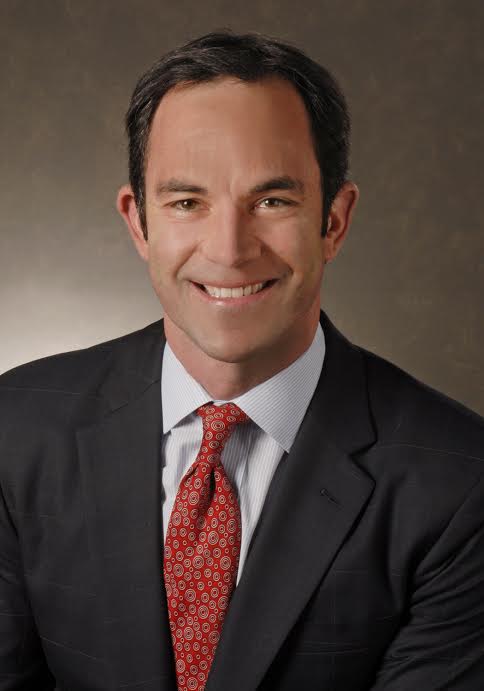Individualizing data collection
As the healthcare industry continues to shift towards a patient-centric structure, treatment must tailor to the individual, not the masses.
This shift towards individualized care is steering spine surgeon Shay Bess's, MD, treatment plans.
"We have a lot of data, but I think we need to ask smarter questions of our data," says Dr. Bess. "Every patient is an individual and if we can individualize the care within an objective metric, that drives satisfaction and outcome for patients."
Dr. Bess, who joins NYU Langone/Hospital for Joint Diseases Sept. 1, believes this personalized data collection is the key to providing supreme care and maintaining a profitable business.
"We are focusing on patient outcomes, however beyond standard patient reported outcomes we need to investigate what is driving the things that patients are reporting," explains Dr. Bess. By looking at why patients are satisfied or dissatisfied, Dr. Bess and his team can improve patient experience and feel confident about choosing economically responsible treatments.
To improve this patient evaluation process, Dr. Bess says it needs to be a more interactive process. Static metrics do not provide a complete understanding of patients’ outcomes and what desires drive these outcomes. There needs to be an adaptive testing process associated with the item questionnaires that react to patients' responses thereby engaging this dynamic process.
"This opens up an enormous realm of economic analysis," said Dr. Bess. "Rather than the lump sum, how do different treatment benefit the individual?"
Comparing spine deformity patients with patients outside of the adult spinal deformity realm is also crucial in Dr. Bess's line of work, as he and his team found spine deformity patients often have disabilities that are equal or exceed the disabilities of more familiar diseases such as diabetes and heart disease.
Understanding the treatments that will most benefit each patient and the economics associated with the treatment types and the treatment outcomes will help create a sustainable, financially responsible healthcare environment, available to all.
Collaborating with members of the International Spine Study Group Foundation
Dr. Bess is the president of the International Spine Study Group Foundation, a multi-center nonprofit research foundation that investigates multiple areas of spine deformity including cervical spine disorders, scoliosis, sagittal plane deformities, economic outcomes, risk factors for complications and ethnic differences in treatment and outcomes. The foundation is currently investigating discrepancies in how patients in Korea, Ghana and Japan report pain.
Dr. Bess and his colleagues strive to better treat and evaluate spine deformity patients of all types and nationalities.
"The best thing about our efforts with the International Spine Study Groups is the collaborative research and combined intellect," says Dr. Bess. "It sets an example for how investigators can come together very successfully and establish great camaraderie to create an enormously impactful product."
Defining spine deformity
Although active in medicine on the international scale, Dr. Bess also sees much opportunity in informing the medical community at home of the complexities of spinal deformity.
"I think the medical community as a whole is largely uneducated on spinal deformity and unaware of the types of deformities that exist within spinal deformity," says Dr. Bess.
With many healthcare providers unaware of the sources of pain inherent to spinal deformities, Dr. Bess cautions that medical providers may overlook the underlying problems that exist beyond nerve compression as a cause of pain for spine deformity patients.
Many of the current recommended guidelines provided by third party payors for the evaluation and treatment of adult spinal deformity do not recognize spinal malalignment problems, such as sagittal malalignment, spinopelvic malalignment or pain associated with scoliosis. Therefore, many physicians will miss these underlying problems and not treat the patients properly.
"[Spinal deformity] combines an array of diseases," says Dr. Bess. "We must educate the medical community as a whole and policymakers and third party payors to make educated treatment decisions, so that we can come together to create appropriate treatment guidelines."
Dr. Bess also holds the responsibility of performing economically-sound procedures. These cost-effective procedures come to fruition when the medical community is better informed about spinal deformity and gathers better data.
"It up to us, to be able to delineate the 'what is' and 'what is not' cost effective," says Dr. Bess. "In the long run, we want to maintain what we do for our patients over the long term so that health care and procedures are available for generations to come."
Joining NYU Langone
Dr. Bess is currently the director of Pediatric Scoliosis Services at Rocky Mountain Hospital for Children/Presbyterian St. Luke's Medical Center in Denver. He will join NYU Langone/Hospital for Joint Diseases in September as the director of the spine deformity program and of spinal deformity research, and will hold an associate professorship of orthopedic surgery at NYU School of Medicine.
"It's a complete honor to join NYU/HJD. We look forward to advancing all the things that we've talked about," says Dr. Bess of joining NYU Langone. "Additionally, by collaborating with the rich medical community at NYU Langone we will be able to evaluate our analyses to different diseases and evaluate different treatment outcomes beyond spinal deformity, thereby comparing and improving patient outcomes."

